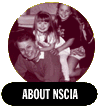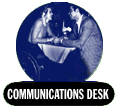
The National
Spinal Cord
Injury Association

![]()
Resource Center
Factsheet #8:
Spinal Cord
Injury Awareness - Understanding the Importance of
Language and Images
![]()
Introduction
Every day more than 30 people become paralyzed from spinal cord injury (SCI) or disease. SCI generally results in one of two types of paralysis:
Paraplegia - paralysis affecting the legs and lower part of the body
Quadriplegia - paralysis affecting the level below the neck and chest area; involving both the arms and legs
The majority of people with SCI use wheelchairs for mobility. Thus, they encounter many obstacles and barriers in everyday life. Among the most difficult barriers are those involving the public's misperceptions and attitudes.
The Power of Language
Language is a very powerful tool. It can be used not only to communicate ideas, but also to change and shape attitudes. People with all types of disabilities are striving for equality, community accessibility, and acceptance. Yet, they are constantly confronted by language which perpetuates negative stereotypes of who they are and what they are capable of doing.
Using positive language that values and affirms people with disabilities is a first step in helping to change societal attitudes. When a term such as "victim" or "invalid" is used to describe a person who uses a wheelchair, the listener or reader immediately views the person as an object, not as a human being. The image that comes to mind is a negative one, focused not on the person, but on the disability. These terms do not allow or encourage the reader or listener to see any of the unique aspects of the individual.
When a person sustains a spinal cord injury and is paralyzed, he/she loses the ability to fully use his/her legs and/or arms. He/she does not lose the ability to think, feel, learn, love, work, or to live life to its fullest. There is life after spinal cord injury! NSCIA is dedicated to helping people adapt to their injury and to live a full and independent life.
It is important to know the appropriate and acceptable terminology to use when writing or speaking about people with SCI. Using proper language is more than just being "politically correct." It helps portray people who use wheelchairs more accurately, raises public awareness about SCI, and helps break down attitudinal barriers and negative stereotypes.
Other topics in this fact sheet include:
- Media Professionals
- Portrayal Issues
- Guidelines for Writing About People With Spinal Cord Injury
- What Is Acceptable Terminology?
- Terminology that is never acceptable when referring to people with disabilities
- Disability Awareness: What Do You Say To Someone Who Uses A Wheelchair?
- Glossary of Terms
- Terminology and Word Usage
For a complete text of this factsheet, Join NSCIA or see the publications catalog.
NSCIA 8/95
This fact sheet was written with input from Michael Muehe, a local disability advocate and SCI survivor. This fact sheet is offered as an information service from the National Spinal Cord Injury Association. It represents only NSCIA's viewpoint on the subject of language and terminology as it relates to spinal cord injury. While these views may be shared by the entire disability community, this fact sheet is not intended to be comprehensive and encompass all types of disability.
Browse the Fact Sheets
Copyright ©1995-98 NCSIA. All rights reserved.




